My first post of this year briefly discussed my goal of doing 3,650 minutes of dry practice in 2019. These posts are mostly for my own accountability. Here are my results to this point in the year:
January 1 – 11: 200 minutes, January 12 – 31: 140 minutes
February 1 – 15: 140 minutes, February 16 – 28: 130 minutes
March 1 – 15: 160 minutes, March 16 – 31: 160 minutes
April 1 – 15: 140 minutes
April 16: 10 minutes, two handed presentation/trigger, 10 minutes, two handed presentation/trigger
April 17: 10 minutes, two handed presentation/trigger, 10 minutes, two handed presentation/trigger
April 18: 10 minutes, strong side OWB presentation/trigger
April 19: 10 minutes, reloads (two-handed, SHO, WHO)
April 20: 10 minutes, presentation/trigger w/ Colt King Cobra
April 21: 0 minutes
April 22: 10 minutes, two-handed presentation/trigger
April 23: 10 minutes, two-handed presentation/trigger
April 24: 10 minutes, strong side OWB presentation/trigger
April 25: 10 minutes, two-handed presentation/trigger
April 26: 10 minutes, two-handed presentation/trigger
April 27: 10 minutes, two-handed presentation/trigger
April 28: 10 minutes, two-handed presentation/trigger
April 29: 10 minutes, two-handed presentation/trigger
April 30: 10 minutes, two-handed presentation/trigger
Monthly Target: 300 minutes
Monthly Actual: 300 minutes
Cumulative Target: 1,200 minutes
Cumulative Actual: 1,230 minutes (20 hours, 30 minutes)
Focus Areas
During this period I decided to get “back to basics” and work the most important fundamental: getting the gun out of the holster safely, quickly, and efficiently, and getting an effective first-round hit.
Presentation & Trigger Control
I had an awesome opportunity this month. During the first few days of this period I was working IVO Camp Lejeune, NC. Rather than stay in a hotel I opted to crash with an old friend. His back yard is about 60 yards deep and at the end of it is a whitetail archery target (behind which is a bullet-safe backstop). Rather than dry practice indoors, I went outside and worked my presentations and trigger control on this distant target.
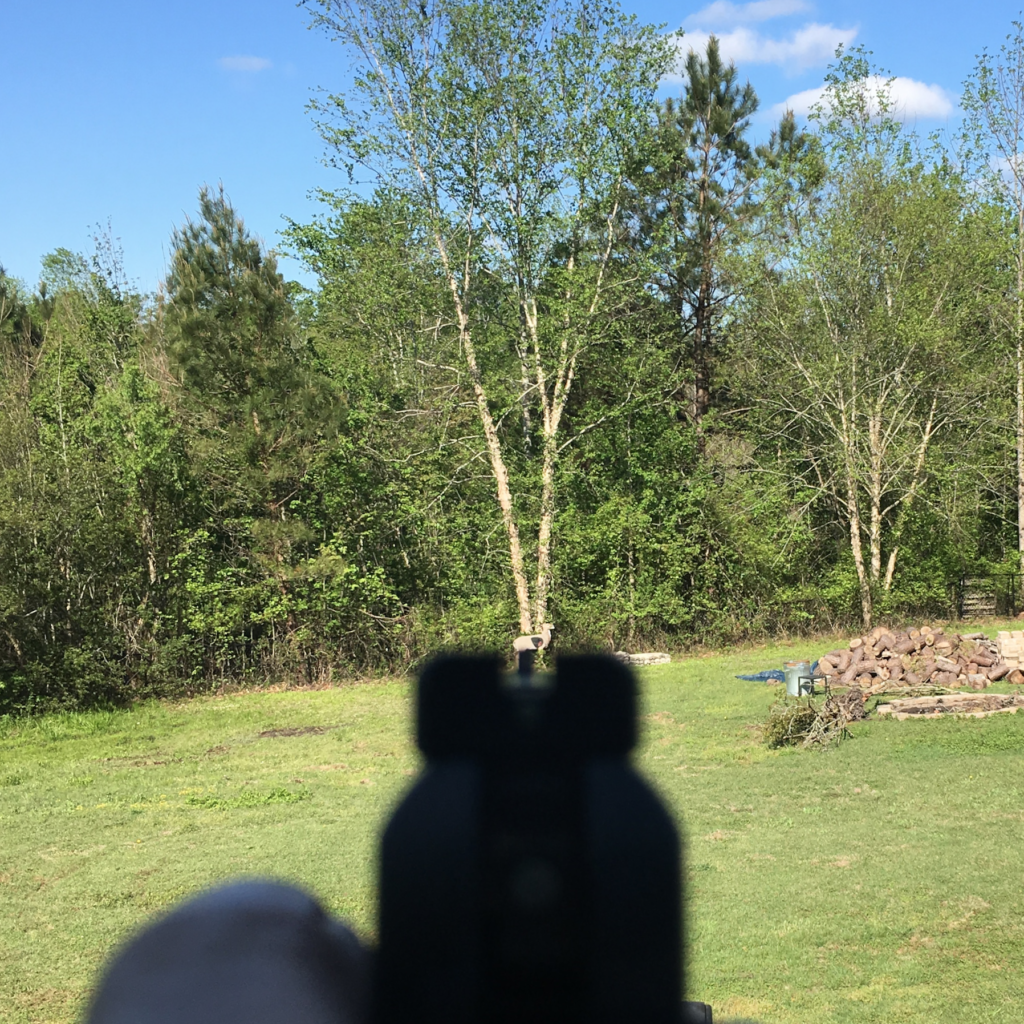
I work “long distance” work into most of my dry practice sessions, even at home. However, I typically do this by using reduced-size targets. Using small targets simulates longer distances, but is not quite the same thing. Actually being able to dry practice at longer distance was awesome. It was new and novel, and gave me a great opportunity to really work on sight focus. Being outdoors was a really nice change of pace, too.
Improvements in Position 3
When I got home I worked a lot more presentation and trigger control with my EDC gun and a couple revolvers. There were a few points I wanted to refine. The first was improving the position of register I place my trigger finger into when the gun is at position 3. Based on a recent Greg Ellifritz article I decided to be more conscious of this and myelinate it. Instead of simply laying my trigger finger along the frame I now index off the lower edge of the ejection port. It took several days before I was doing it without thinking about it, though I continue to spot-check myself on it.
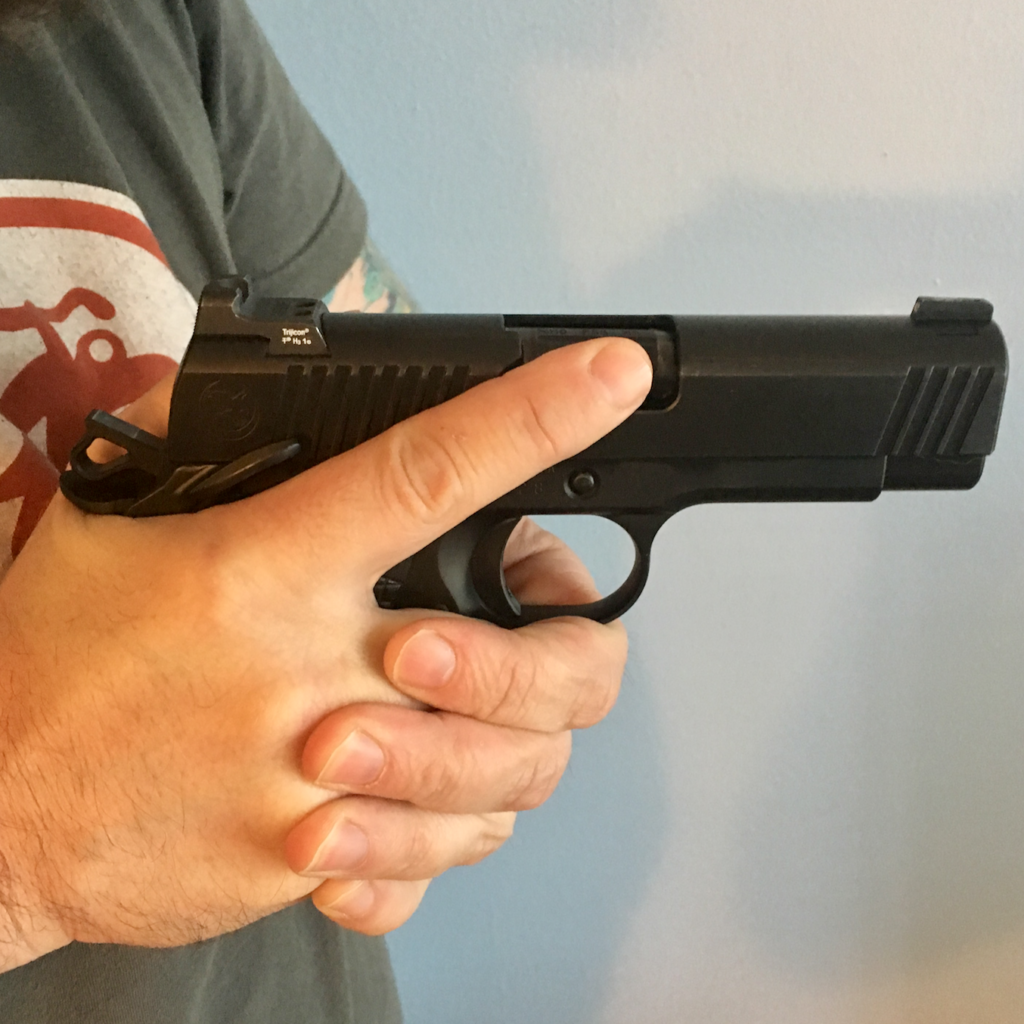
I also worked on getting the gun back into a good position of retention when bringing it back to position 3. I had been getting lazy about this and bringing the gun back to a point about 6″ off my middle chest. Instead of that lousy “technique” now I’m pulling the gun back into a hard, defensible position and indexing it with the muzzle more closely oriented toward the target. I was reminded of the need to do this a couple weeks ago when reading Guerilla Gunfighter: Clandestine Carry Pistol by John Mosby (John is the author of the Mountain Guerilla blog. I’m a fan.).
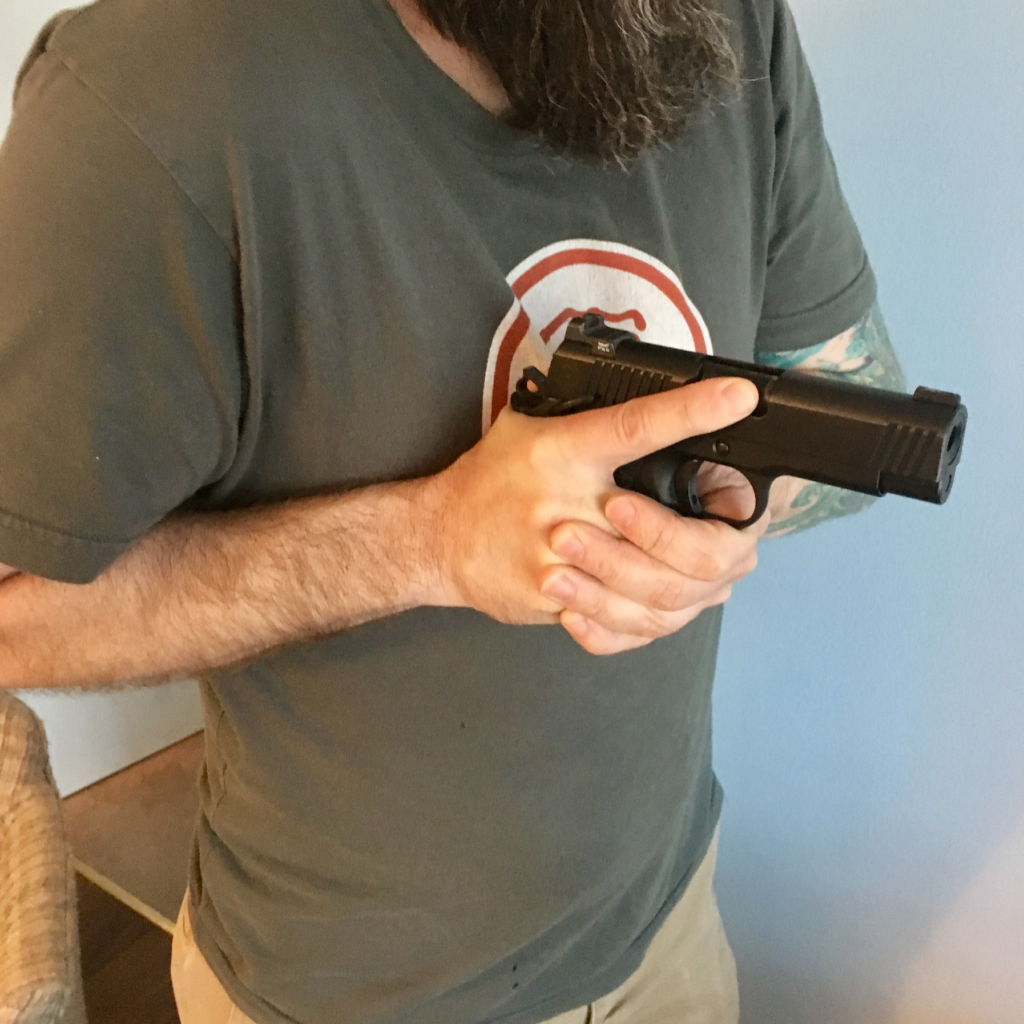
Validation
I feel a little validated on all my draw stoke/trigger work this month. During this period I went to the range and successfully scored 100% on the Dot Torture drill. . . at six yards. That’s twice the prescribed distance and I’m pretty happy about that. I’m also realizing that I’m leaning really heavily on this drill. Though I’m now tempted to shoot it at seven yards, I need to branch out a bit more to drills to improve my speed. More to follow on that.
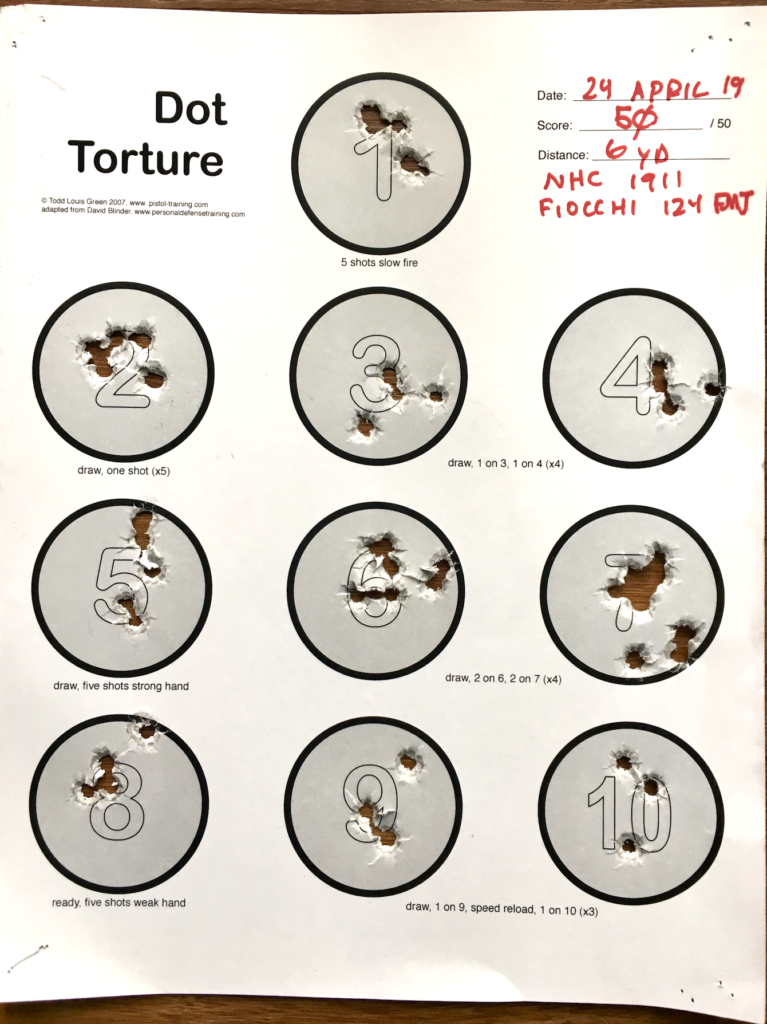
It’s not hard to find 10 minutes a day to dry practice. Take ten minutes you’d be spending vegging out on Instagram or in front of the TV and turn it into a tangible skill.

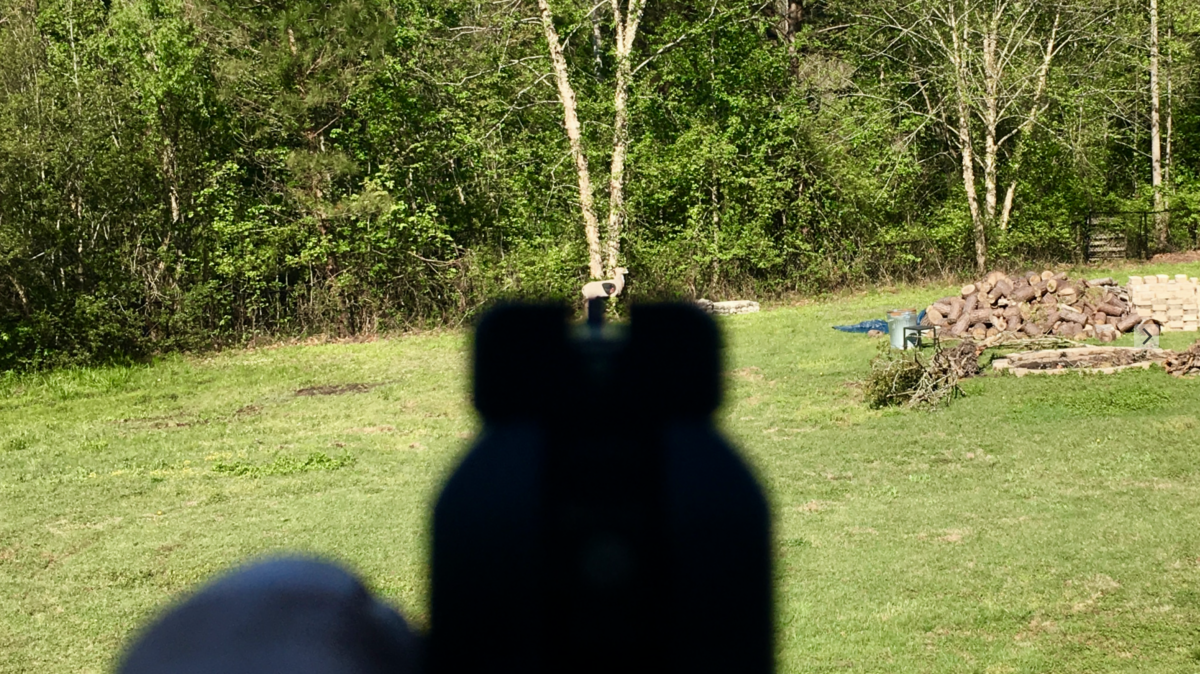
I have also been working that high trigger finger index thing… What I find interesting is that difference between reduced targets and true long range work. I notice it as well, but I feel like it shouldn’t matter. Is it
psychological or is there some real, physical thing going on?
Riley,
First, it’s good to know someone is reading these!
I’m not sure why but I do believe there is an actual difference. I shoot handguns at longer distances quite a bit (25-50 yards) and at long distance occasionally (100 yards), and shooting reduced targets at 5/7/10 yards just isn’t quite the same. If shooting reduced targets at closer ranges seems easier, it could be because without the distance you don’t get the exaggerated effects of being a tiny bit off on sight alignment, pulling the gun ever so slightly to one side, or any of the myriad of other things that can go wrong and exhibit outsized influence at range.
I’m sure someone out there has done the research – I just haven’t gone looking for it…yet!
Justin
P.S. – I also think you get the mental aspect at long range that you don’t have at closer distances. I think more its the physical aspects that screw us up, but the mental stuff can be a hindrance as well.
For me, I think a big mental difference is that the reduced size targets are still clear, whereas the distant ones are not. That makes them seem close, and therefore, “easier”
I believe it to be a mental thing. Outside of compensating for drop, that is. The angles aren’t any different, the amount of target covered up by the sights isn’t different, etc. Mike might be onto something about our eyes’ and focusing on a close vs far target, but except for that and the obvious compensation for drop it should be the same. It is definitely different, so I have to conclude that it’s mental.
I am always open to critique, though.
Hey, good to hear from you!
I’m not discounting the mental aspect, I do think there’s something to it. However, I don’t think that’s all there is because most of my handgun shooting sessions involve shooting at 25-50 yards so I’m pretty comfortable in that space. I think the mechanical aspect shouldn’t be disregarded. For your consideration: if my sights are misaligned such that I’m just 1/2 off center at five yards, there is a tenfold increase at fifty, and my round ends up missing its ultimate mark by five full inches. If I’m off enough at five yards that I’m a fully inch off…you get the idea.
All those tiny little mechanical mistakes that still put us in the black on a small target at close range add and multiply themselves at distance.
Now, I’m going to totally contradict myself. I also find shooting steel out to at least 100 (where “any hit, anywhere” counts) to be pretty easy. Then again, I’m usually giving myself the whole target to hit, so…
Just food for thought!